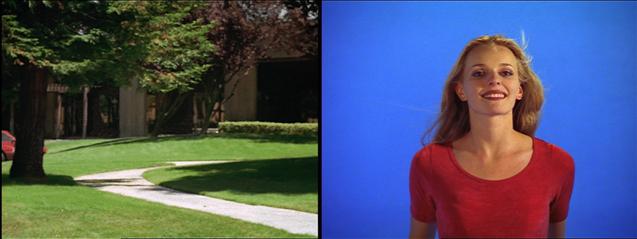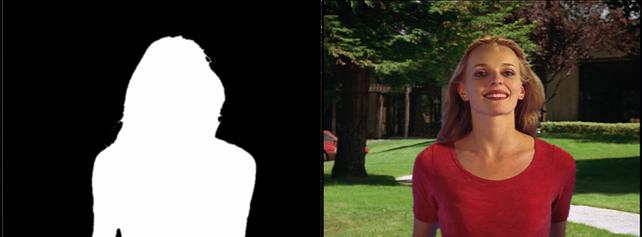Is it possible to create copies of one person in a scene with the program? What about replacing the person with a different object?
+ Reply to Thread
Results 1 to 21 of 21
-
-
Is it possible ?
Yes
Is it possible with Premiere ?
Possible in some circumstances, but you would have to plan for it
Is it easy ?
Even with specialist software, doing it well is an art form. Doing badly is simple.
If you want to have multiple instances of a person in a scene, then best method is to shoot the empty background plate first, then shoot the person doing various things in front of a green screen, then compositing them into the scene.
If the scene is simple, you might just have them do actions in one half of the frame, then in the other half, then do a split screen afterwards.
Replacing a person with an object is most simply done using green screens and compositing.
Premiere (and in fact most editors) will do basic compositing effects, however their keying software tends to be crude and lacks the ability for fine adjustment. This is especially important for DV footage, which is difficult to key nicely with basic software. You need to look at effects software to get the best out of it - after effects, FXHome, Combustion, Fusion are all designed to do these types of effects.Read my blog here.
-
Is it required to have a green screen? how would i do it. Is a green screen something with a green background or is it possible just to cut out the person and place them on a green screen?
-
Look up "Chroma Key " this is a basic video technique but usually not for beginners.
Google "Chroma Key editors" there is even a free one. -
Not sure about Premeire but in my editor it doesn't "have" to be green but any solid colored background. Green apparently works the best, also note it's a specific color green, the greenest of greens. :POriginally Posted by vipertongn
In laymans terms the idea is you have one color you want to remove it from the frame, you tell the editor to remove that color from the frame. Simple as that. Note that you want a uniform color, well lit with no shadows. -
Note that I am a beginner and its just me starting out and doing this so telling my editor to do something like this is a bit difficult since the editor is me. I'll try it out.
-
Green works best for typical Y,Cb,Cr consumer camcorders. Blue or Green work for RGB cameras or film.


http://store02.prostores.com/servlet/tubetape/StoreFront
http://www.prostudiousa.com/Chroma-Key-Items-C35.aspx -
Cutting out a person is easy in a photo but a moving person in video creates 30 frames per second. That's a lot of hand cutting.Originally Posted by vipertongn
-
is it possible to use a program to make the green screen? suggestions?
-
The green needs to be behind the person when you make the shot. The green is used to separate the edge of the person from the background.Originally Posted by vipertongn
Studio cameras produce RGB out so blue can be used.

Look at the monitors at the top.

-
You shoot the person in front of a green background then use the software to "key out" the green leaving the person and an "alpha" defining the persons edges.Originally Posted by vipertongn
Then the new backround is added in the areas not defined by the "alpha".
Picture 1: desired background
Picture 2: person in front of chroma key background
Picture 3: the resulting "alpha"
Picture 4: the composite
Background shows where alpha is black.


http://www.cescg.org/CESCG-2000/GBlasko/index.html -
This is basic and used all the time. That is how the TV weatherperson stands in front of the maps and other video. This is described in the manuals (What are those) for your editing program. You can buy the chroma key screens, backdrops, cloth, etc. Blue was the standard because it was a pleasing background and not offensive. That has changed because anchors like wearing blue. Green was used less often and bright green is the main standard used. Keys better, also.
As gunslinger mentioned in the beginning, simple if you plan for it. Not so much if you don't.
This concept is used all the time in television, movies, and production work, especially commercials and promos. -
All the basics of 2D anaimation in 3D space. Premiere does the basic moves, After Effect does more and makes 2D look more like 3D.Originally Posted by vipertongn
x size, rotation, center of rotation, etc.
y size, rotation, center of rotation, etc.
all variable plus motion paths controlled by key frames and spline variables.
You need a tutorial package for Premiere Pro. Try Total Training.
http://www.totaltraining.com/prod/adobe/premierepro2.asp -
TV studio cameras have traditionally had RGB outputs (before YCbCr matrix and encoding) that allows full resolution and full bandwidth blue to be used in a studio. For YCbCr 4:2:2, 4:2:0 and 4:1:1, blue gets both resolution reduced and tends to carry more noise. Uncompressed YCbCr can still do a rough key from blue but once encoded to tape or MPeg, blue takes a beating. The fully sampled Y channel contains over 50% Green and only 11% Blue.Originally Posted by kimco52
Y = 0.299R + 0.587G + 0.114B
Blue extraction is limited to the resolution reduced CbCr. This causes green to be the key color of choice in YCbCr format. Blue is more pleasing color to work in 8 hours a day so is still used in TV studios and film sets. Green is mostly used for video/film effects work to get performance advantages. -
The big boys use motion control cameras where a computer records the exact camera moves. These moves can then be used when compositing to make sure that everything lines up when in motion. 3D backgrounds can move just like there were there when it was shot.so then how do you add animations into the videos then?Read my blog here.
-
but if you create animations how do you combine the rendered movies with the movies captured on video with premiere?
-
Graphics and animations can be done with alpha channel which sets the transparency of pixel of color. Similar to chroma key but this is much more precise, matter of fact it's exctly precise. It either has transparency or doesn't and can be anywhere from 100% transparent to not transaprent. For example if you made up an animation or graphic you simply set the background as alpha channel at 100% transaprency. When you import into your editing program there will be a selection for alpha channel, abracadabra the background is gone.Originally Posted by vipertongn
Sample image below to try it out.
smoke.tga
For creating simple animations I'd suggest Ulead Cool 3-D , note that this or any animations program for tha matter is not easy to use.
Similar Threads
-
Questions about using Adobe Premier Pro
By Graemey in forum Newbie / General discussionsReplies: 2Last Post: 21st Mar 2010, 07:02 -
not enough disk space - Adobe premier Pro 2.0
By Reggie6966 in forum Newbie / General discussionsReplies: 11Last Post: 8th Nov 2009, 04:07 -
Adobe Premier Pro to dvd
By tat2loo in forum Newbie / General discussionsReplies: 7Last Post: 29th Apr 2008, 13:57 -
Adobe Premier Pro - Mpg - Skipping.
By primalmedia in forum EditingReplies: 1Last Post: 7th Nov 2007, 11:35 -
5.1 AC3 and DTS in Adobe Premier Pro
By zerohash in forum Authoring (DVD)Replies: 6Last Post: 25th Sep 2007, 08:39




 Quote
Quote By editor I meant the software you are using not a person.
By editor I meant the software you are using not a person.
